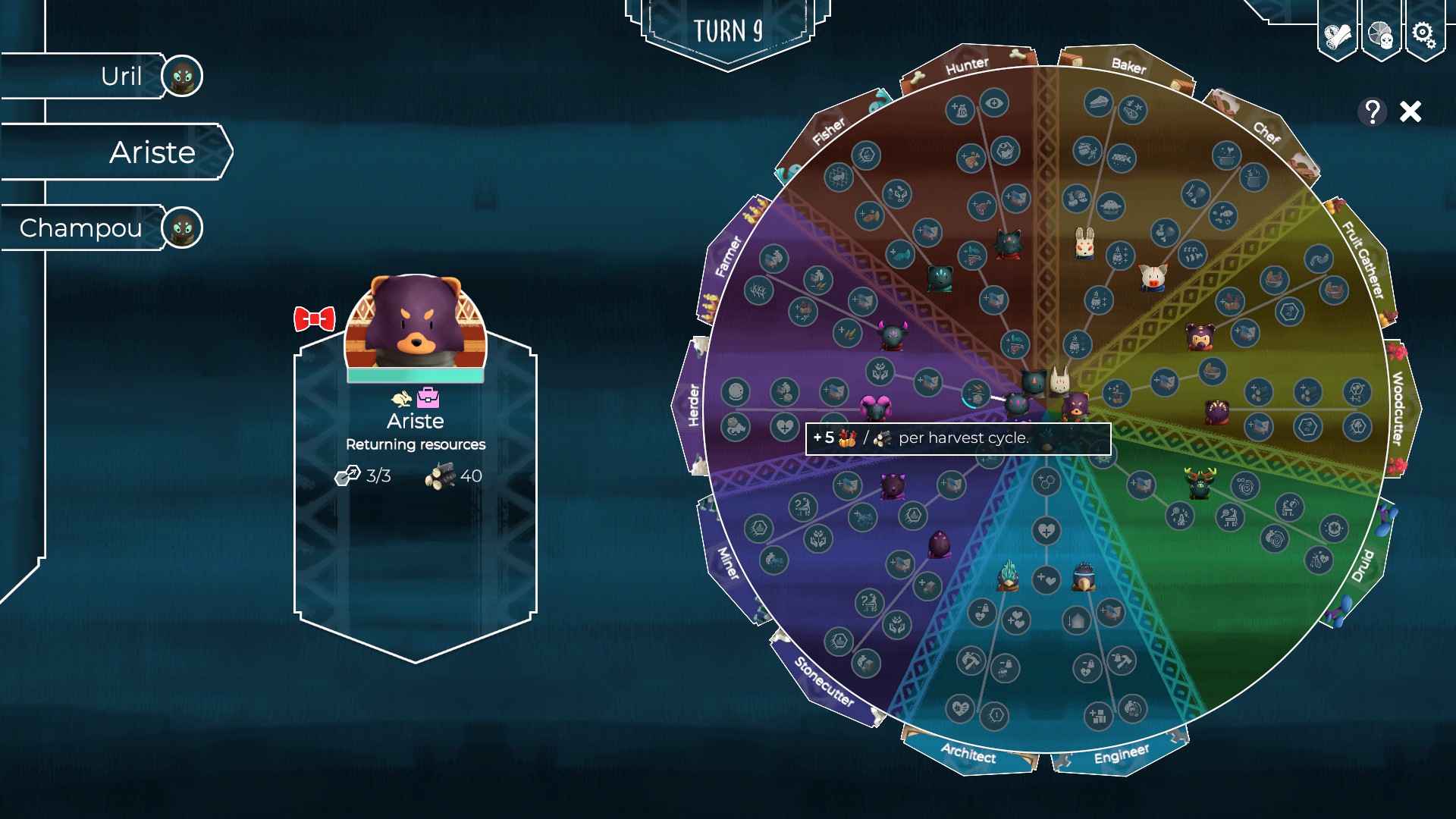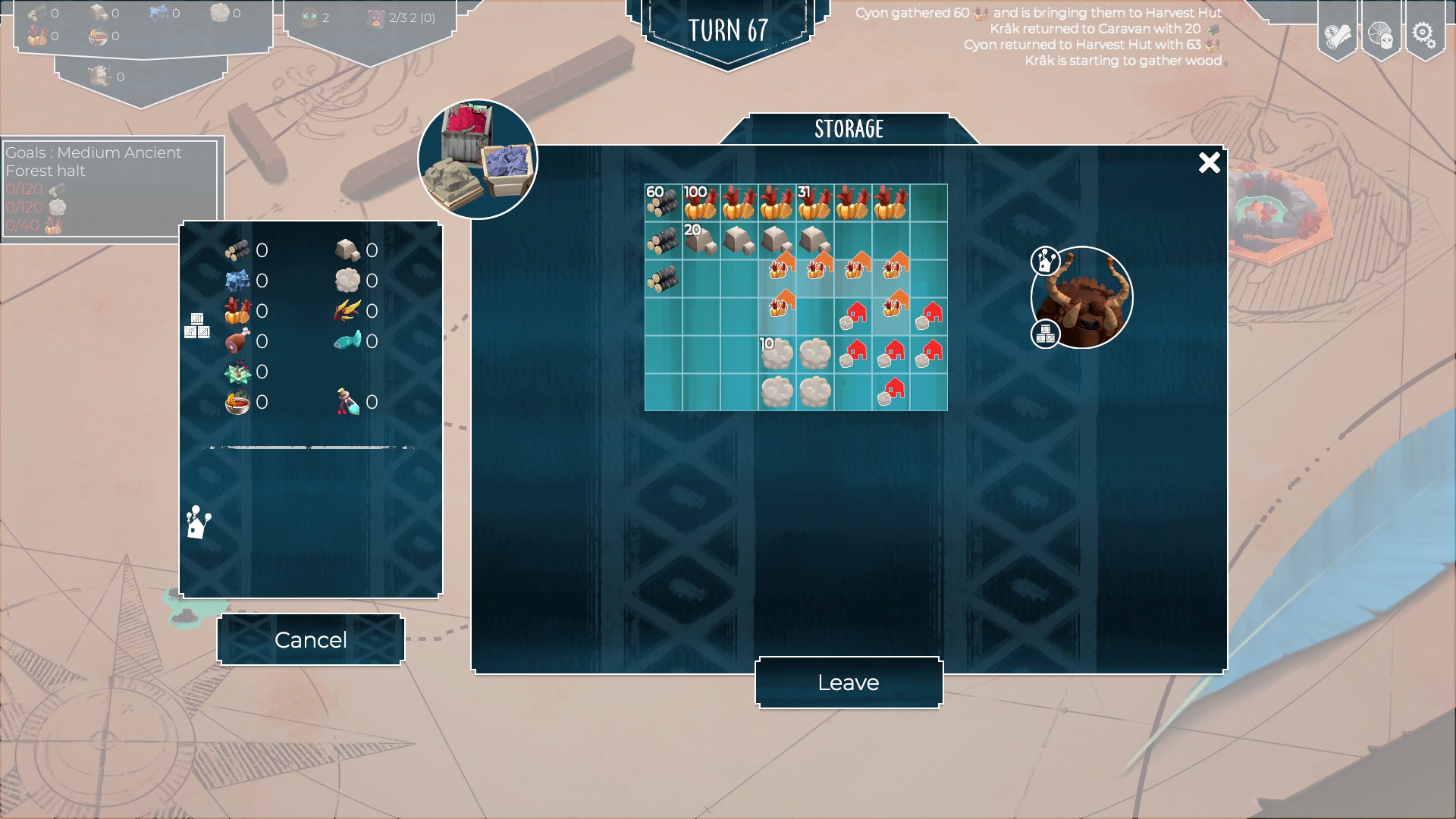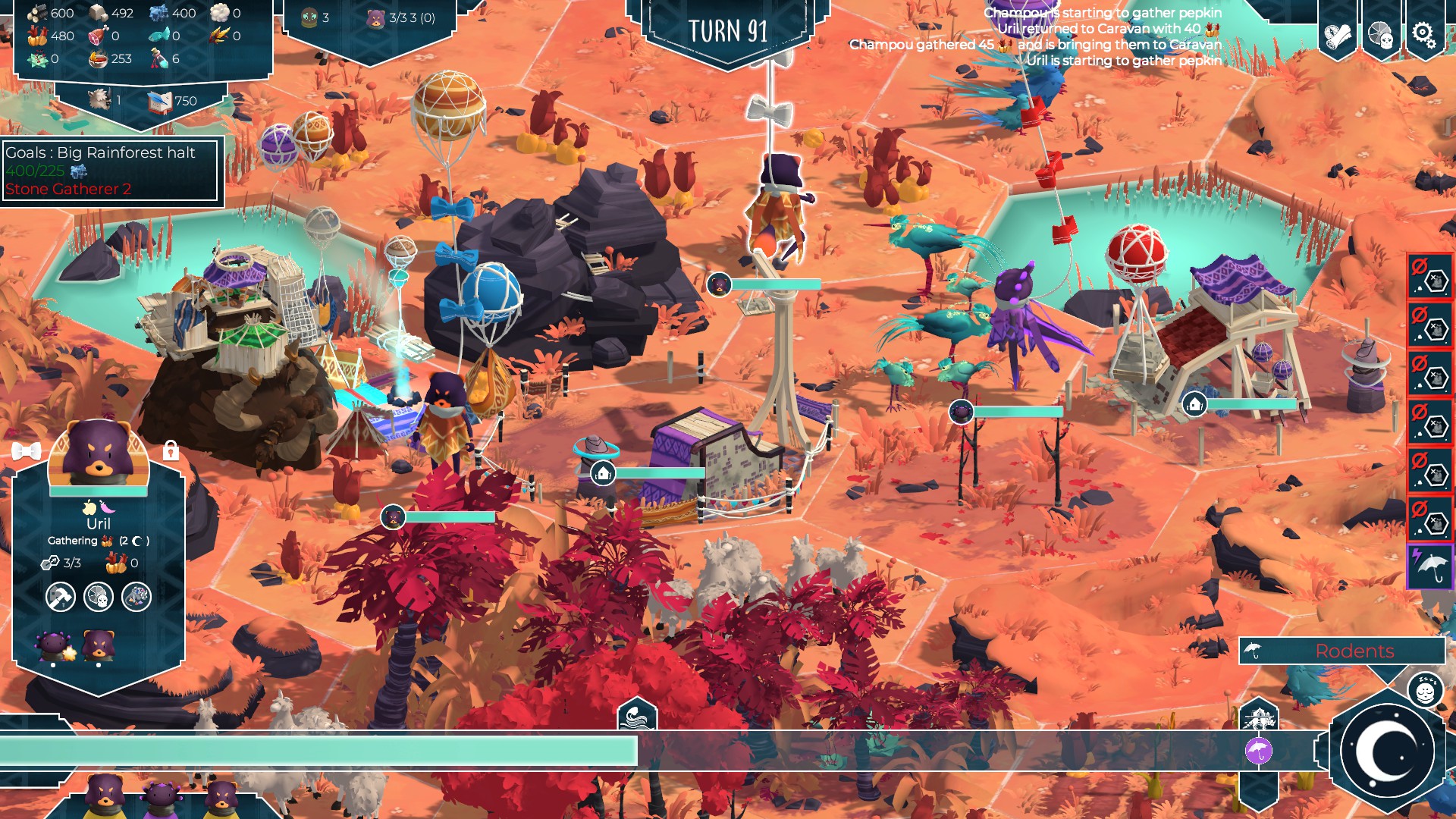Platform:
PC
Released:
September 11, 2020
Publishers:
Goblinz Studio, Maple Whispering Limited
Developer:
Unexpected
The Sigh has awoken. Surging across the lands, its relentless waves drown everything in their path. Pupils set off on their long journey to the Great Meeting, where they will share their collective wisdom and cluster in safety from the approaching tide. How far will this journey take them? Well, only As Far As The Eye.
A turn-based strategy game from developers Unexpected, As Far As The Eye is a resource management sim placing you in control of nomadic tribes folk in their quest to escape an apocalyptic flood. With big, friendly animal companions and adorably shapeshifting worker units at your command, how does the Pupils’ pilgrimage to The Eye hold up?
Levels in As Far As The Eye are divided into “halts”. These are little oases on your tribe’s journey towards The Eye, and where you’ll be gathering resources and building up your tribe’s skills. Each halt has its own unique layout, hazards, and available resources. Some contain special “auras” that need to be soothed in order to gather a particular kind of resource, and others are filled with shrines and ruins waiting to be plundered. You can choose which halt to travel to next from the map screen, and then you need to complete the requirements in order to travel there (for example, gathering enough Wood or gaining enough experience in a certain skill).

You begin each halt by deciding where to park your Caravan, which acts as your base of operations. In order to harvest resources, your “Pupils” (worker units) will need to build specific buildings. Building temporary buildings is relatively cheap, but if you can afford to build the permanent “mobile” buildings you’ll be able to carry them on to the next halt – as long as you have space in your Caravan for them.
Once you’ve completed the prerequisites for travelling to the next halt, you need to pack your Caravan with as many resources and mobile buildings as you can carry. This is done via a Tetris-like interface where you stack resources as efficiently as possible. It’s important to get a sense of what kind of space each resource type takes up in your Caravan, as you’ll need to be prepared for whatever the next halt throws at you.

Each halt brings you a little closer to The Eye, that safe haven from the dreaded flood that chases you. You’ve got a certain amount of turns until The Sigh catches up with you and everybody drowns – I think. I have to admit, I did not pay much attention to the story of As Far As The Eye. There is so much pseudo-poetic scenario text mixed in with the gameplay tutorials that I found my brain was turned to mush trying to figure out whatever Unique Name they were calling each mechanic. I usually love a bit of worldbuilding, but it needs to be integrated carefully into moment-to-moment play so as not to be distracting or confusing. When you can’t tell lore from tutorial, it’s a worry.
This leads in to what is probably my biggest issue with As Far As The Eye: the user interface. While the artstyle is pretty and the environments are lush, the integration of the UI with the onscreen elements is not handled fantastically. Have a quick glance at the screenshot below and see if you can figure out what the most important piece of information is. For this muted-palette graphical style to function, interactable objects need to be much more clearly defined than this. The cute little balloons above each Pupil are supposed to make them stand out, but they end up adding even more unnecessary clutter to an already dense visual landscape. It usually took me multiple clicks to figure out what I was selecting, and over long stretches of play this added up to a tonne of extra fingerwork.
There is also a sense of rushed development, leading to a bunch of bugs and the occasional soft-lock. The “Campaign” has you playing through a series of tutorials that, apparently, must be completed in a particular order. In almost every tutorial, I unknowingly completed some activities before the game told me to. This led to me needing to repeat that halt from the beginning. A bit frustrating when it happened the first time; incredibly infuriating after the fifth time. I also managed to somehow trap a text box on screen, permanently obscuring part of the map. How? Who knows.

More than anything, this game unfortunately felt like work. For me, strategy games tread such a fine line between letting you execute a satisfying plan while responding to surprise threats, and drowning you in busywork until you get to the interesting bit of the game. With As Far As The Eye’s constant “vagaries” (violent natural disasters) and the need for upkeep on absolutely every game element, it gets really tiresome to always be on the defensive. And for a strategy game that encourages long play sessions and dedication to your Pupils, defeat is all-too-common and incredibly punishing. If all of your Pupils die (from hunger, disease, etc.) then you get a little pop-up box telling you that you’ve lost and you’re unceremoniously booted to the main menu. No post-game analysis, no recorded stats, not even the ability to scroll the map and see where you went wrong. You can’t have multiple saves either, so playthroughs end up feeling stuck somewhere between a roguelike run and a long-form campaign.
It feels unfair to compare a relatively small indie game to the likes of Civilization or Crusader Kings, but even when held up against other small titles like The Battle of Polytopia it’s disappointing that As Far As The Eye’s flaws hamper the experience so much. The bones of a good strategy game do shine through here and there – it just needs a few more months of playtesting before the fun outweighs the frustration.
5
Average
Positive:
- Beautiful artstyle with a muted, colourful look
- Lots of intertwining mechanics for strategy buffs to explore
Negative:
- Repetitive, punishing gameplay loop with lack of reward system
- Frustrating lack of UI consistency
- A number of bugs leading to lost progress
For a strategy game that wants you to play for long sessions, inching your way “halt by halt” to safety for your tribe, As Far As The Eye lacks the quality of life features that would make the experience rewarding. Fans of turn-based strategy games might find enough enjoyment here to look past its most obvious flaws – there’s certainly a mechanically dense, lore-heavy strategic experience here for those willing to work for it – but if, like me, you like your games served without a healthy dose of frustration, you may want to look elsewhere.





